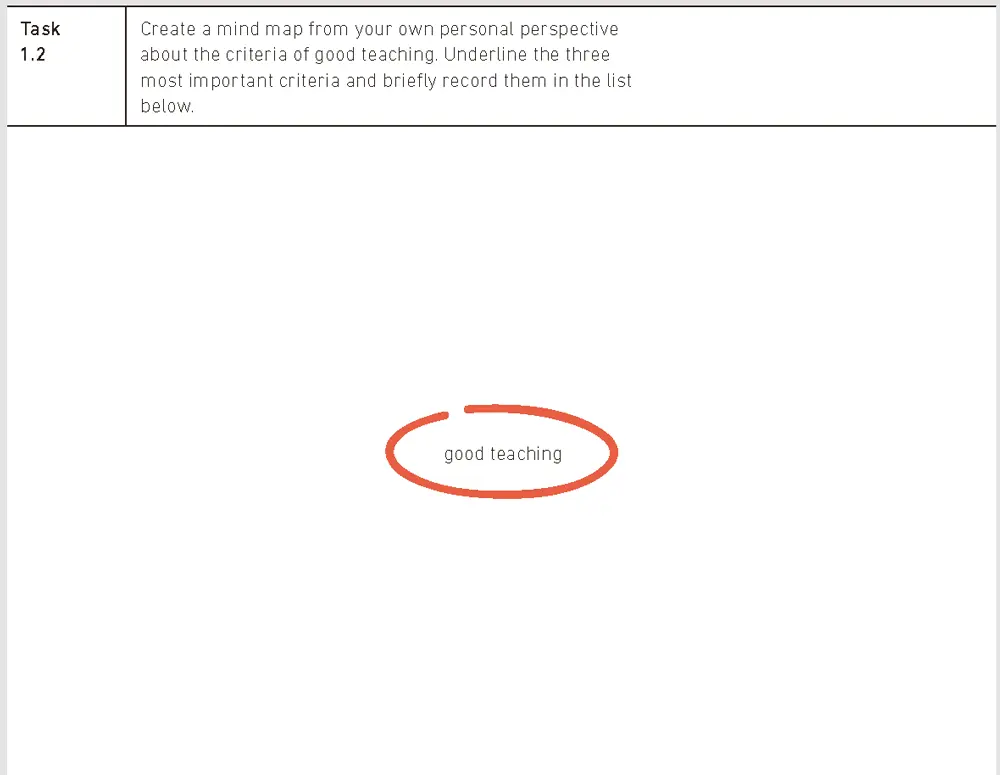In our opinion, the quote, the criticism and the demands by Comenius have some merit today. Not only in his spirit and in agreement with many historic figures in pedagogy, but also with prominent teaching researchers of the present, we plead
•for flexible and creative classroom teaching, and
•for didactics by which significant things are taught and learned,
•for a methodology that seeks to avoid boredom, and
•for a teaching atmosphere in which learning is not equated with blood, sweat and tears, but pleasure, laughter and relaxed concentration.
A book with the title Simply good teaching may also incur the risk of misunderstandings, however. The opinion that instructors should simply teach well, and that everything else is secondary, enjoys a certain popularity. It is argued that teachers should follow the curriculum, the written and unwritten rules of their profession, the mainstream educational policy. We do not share this opinion and agree with the view of Thomas Kesselring: “Those who think like this run the risk of confusing the targeted situation with the present situation, the desired with the existing as-is-situation.”5
General didactic places its focus on questions of good teaching. The tasks of teachers, however, demand an examination of broader issues which transcend teaching in a narrow sense and which, not without reason, are considered even more important by many educators: How can I, as a teacher, contribute to a class climate that promotes mutual respect, consideration and appreciation? How can I implement these principles of satisfactory interpersonal relationships also in terms of contact with colleagues and with parents? What can I contribute so that the children or adolescents who are entrusted to me can lead a fulfilling life, feel confident and up to the tasks and challenges that life imposes, and lead an enjoyable existence? All these questions are obviously related to good teaching, but their solutions require discussions which transcend the scope of the discussion in this publication. Last, but not least, they require educators who promote the further development of the school in our democratic society in a constructive, forward-looking and critical manner. Without a public education system which promotes and further develops an open, liberal-minded, democratically legitimized school, any didactic-methodologically sound teaching approach, no matter how well thought out, remains only patchwork.
1
Lipowsky:Zur Qualität offener Lernsituationen im Spiegel empirischer Forschung, 2002, p. 126
2
Altmann:Training foreign language teachers for learner-centered instruction, 1983, p. 24
3
Comenius:Grosse Didaktik, 2007
4
Berner:Didaktische Kompetenz, 1999, p. 32, 33
5
Kesselring:Handbuch Ethik für Pädagogen, 2012, p. 14

“To teach a child does
not mean to fill a vessel, it
means to light a fire.”
Michel de Montaigne (1533–1592)
“Ignorance is the night
of the mind, a night without
moon and stars.”
Confucius (551–479 BC)
WHAT IS GOOD TEACHING?
Key characteristics of successful teaching from a teaching research perspective
There are numerous principles which, if observed, demonstrably render teaching more successful and effective. The most important of these are briefly summarized in this chapter with reference to the findings of the renowned teaching researchers John Hattie and Andreas Helmke, as well as the teaching expert Hilbert Meyer. By bringing together in an overall appraisal the teaching principles which Hattie, Helmke, and Meyer consider learning effective, a broad pedagogical consensus is presented, which reflects not only the German-speaking debate but does justice to the international discussion as well.
The fact that the good method of teaching does not exist becomes immediately apparent if one asks a few simple questions: good for what, under what conditions, good for whom, good for when? These questions suggest that good teaching can only be described in a specific context which, in conjunction with a given situation, must constantly be defined anew by the teaching practitioners themselves – taking into consideration the perspectives of all concerned. This perspective should not lead to the misunderstanding that there are no quality characteristics for teaching. “No, there is no such thing as the right teaching method”, says Andreas Helmke, “but there certainly exist instructional quality characteristics which are absolutely and unquestionably valid, there are well-founded standards of teacher behavior, and there are important benchmarks of teacher expertise, about which there is a broad consensus.”1 These characteristics relate to the learning atmosphere on the one hand, and, on the other, to the motivation of the learners but ultimately to the didactic-methodological procedures . Although we address the latter group of characteristics more broadly than the first two, it would not be right to attribute to it a greater significance for successful teaching. Successful teaching is the result of a balanced mixture of an atmosphere conducive to learning, adequate motivation and methodological-didactic know-how.
Most of the twelve characteristics considered will be easily identifiable in the follow-up discussions of the later chapters. For those interested in a more intensive discussion, there are suggestions for further self-study. With a digression to learning objectives and competences , several terms which are important for teacher education are briefly discussed. They should also be part of a general discussion as a link to the teaching methodology.








The following twelve characteristics of good teaching can be grouped into three categories: learning atmosphere, motivation and didactic-methodological know-how. In doing so, we follow a suggestion by Wolfgang Beywl2 who contributed significantly to the reception and understanding of John Hattie in the German-speaking areas by presenting an overview and assessment of the positions developed by the three referenced authors in the introduction of this chapter.
Читать дальше





















